2025 Toyota RAV4 vs Honda CR-V: Which SUV Should You Choose?
Whether you’re shopping for a family-friendly crossover or an everyday capable commuter, the 2025 Toyota RAV4 vs Honda CR-V matchup is hard to ignore. Both are bestsellers. Both promise comfort, space, and reliability. But dig deeper, and the differences start to matter—especially when it comes to performance, tech, and everyday usability. Let’s see which one fits your life best.
Here’s what we’ll cover in this 2025 Toyota RAV4 vs Honda CR-V comparison:
Performance
2025 RAV4 vs CR-V Comparison: Which One Drives Better?
Compact SUVs aren’t built for the racetrack—but performance still counts. You feel it when merging into traffic. You need it on icy roads or when hauling weekend gear. The 2025 Toyota RAV4 and Honda CR-V both offer smooth, capable drives. But dig deeper, and key differences start to emerge.
The 2025 RAV4 is powered by a naturally aspirated 2.5-liter four-cylinder engine, producing 203 horsepower and 184 lb-ft of torque. It pairs with an eight-speed automatic transmission and comes standard with front-wheel drive, with all-wheel drive available across most trims. The powertrain is straightforward and proven, delivering steady acceleration and a familiar, gear-driven feel. However, under hard throttle, the engine can sound coarse, and the transmission occasionally hesitates on downshifts.
Honda takes a different route with the CR-V’s turbocharged 1.5-liter four-cylinder engine. Despite its smaller displacement, it produces a healthy 190 horsepower and 179 lb-ft of torque. A continuously variable transmission (CVT) handles power delivery, offering seamless shifts and a smoother driving experience, especially in stop-and-go traffic. The CR-V feels slightly more refined in typical city and suburban driving. Acceleration is marginally quicker too—0–60 mph comes in at 8.1 seconds, compared to 8.3 seconds in the RAV4.

The CR-V Stands Out on the Road
Its precise steering and balanced chassis are very good. While not sporty, it feels composed and more agile in corners than the RAV4. Honda’s suspension tuning minimizes body roll while maintaining ride comfort. The CR-V also includes hill descent control on all trims—a useful feature for winter roads or unpaved driveways.
The RAV4 emphasizes stability over agility. Its steering is predictable but less communicative, and its ride quality prioritizes firmness and control. Most trims offer 8.4 inches of ground clearance—more than the CR-V—which helps in rough conditions. However, Toyota’s decision to discontinue the more rugged TRD Off-Road and Adventure trims for 2025 limits the model’s off-road advantage.
When it comes to braking and emergency handling, the CR-V again holds a slight edge. In instrumented testing, it stopped from 70 mph in 163 feet, while the RAV4 required 176 feet. On the skidpad, the CR-V pulled 0.82 g compared to the RAV4’s 0.79—modest differences, but indicators of stronger grip and control under duress.

Fuel Economy is Closely Matched
The front-wheel-drive RAV4 achieves 28 mpg city and 35 mpg highway, while the AWD version drops slightly to 27/33 mpg. The CR-V’s AWD model comes in at 27 city / 32 highway. In real-world testing, both SUVs returned roughly 31 mpg on a 75-mph highway loop. The CR-V’s hybrid trims, reviewed separately, do offer a significant efficiency advantage for buyers focused on long-term fuel savings.
Both vehicles can tow up to 1,500 pounds when properly equipped—enough for small trailers, bikes, or a light camping setup. Previously, the RAV4 towing capacity was rated for up to 3,500 pounds, depending on trim level, but with those now discontinued, the towing capacity is identical.
The SUV With the Better Performance is…
The CR-V. While the RAV4 offers slightly more power and a traditional transmission, the CR-V edges ahead with smoother performance, better braking, sharper handling, and marginally quicker acceleration. It’s the more refined and responsive of the two in everyday driving.
Exterior Design
Exterior styling is about more than curb appeal. It’s also about how design choices affect visibility, access, functionality, and ease of daily use. The 2025 Toyota RAV4 and 2025 Honda CR-V approach this from different angles—one leaning toward rugged personality, the other toward refined practicality.
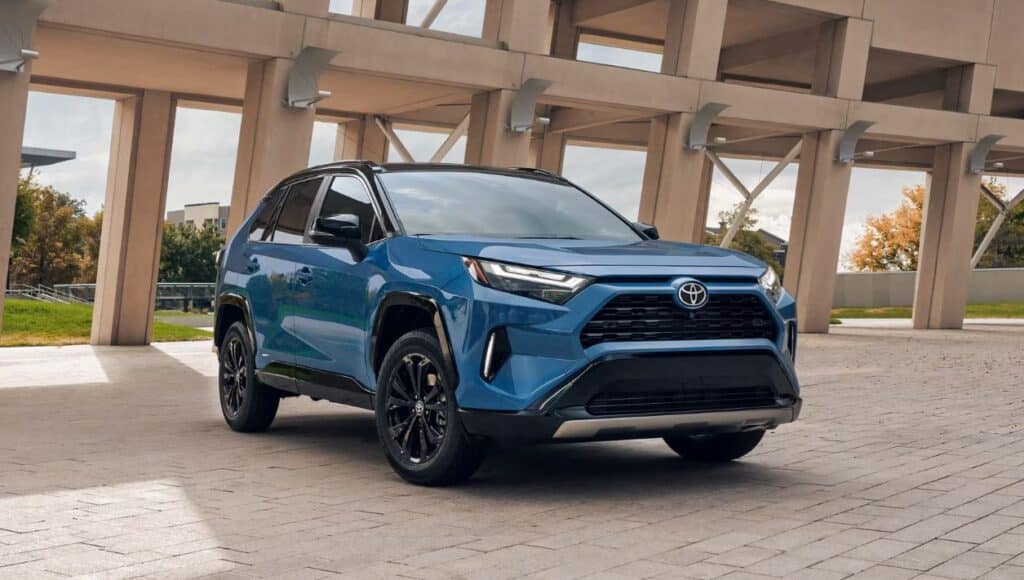
The RAV4 Wears a Bold, Adventurous Face
Angular fenders, a wide grille, and sharp body creases give it a tough, outdoorsy look that recalls Toyota’s off-road pedigree. Even with the departure of the TRD Off-Road and Adventure trims for 2025, the RAV4 retains their aesthetic influence across the lineup. The two-tone paint options, blacked-out accents on sportier trims, and expressive LED lighting signatures further push it toward the “urban explorer” image. It stands out, especially when optioned in vibrant colors like Lunar Rock or Ruby Flare Pearl.
The CR-V, redesigned in 2023, presents a different kind of appeal. Its longer hood, clean side profile, and subtle detailing give it a more mature, upscale look. The horizontal grille and slim headlights contribute to a sense of composure rather than aggression. Honda’s color palette is more understated, with tones like Urban Gray, Radiant Red, and Canyon River Blue, emphasizing a more sophisticated aesthetic. It’s not flashy, but it looks expensive—even when it’s not.
How do They Compare From a Functionality Standpoint?
The CR-V edges ahead in a few key areas. Its rear doors open wider than the RAV4’s, making it easier to load larger items or help passengers into child seats. The lift-over height at the rear cargo area is slightly lower, which improves access when loading groceries or luggage. Ground clearance is lower than the RAV4’s, but that translates to easier entry for passengers and pets, especially in suburban or urban environments.
In contrast, the RAV4’s higher stance and chunkier wheel arches suggest more capability. Most trims sit at about 8.4 inches of ground clearance, which can be helpful for snowy conditions, trail access, or gravel driveways. Its 17- to 19-inch wheels—with meatier tire profiles on some trims—reinforce this adventurous character. However, the taller ride height comes at the cost of a slightly higher step-in and cargo load floor, which could make it marginally less convenient in everyday scenarios.
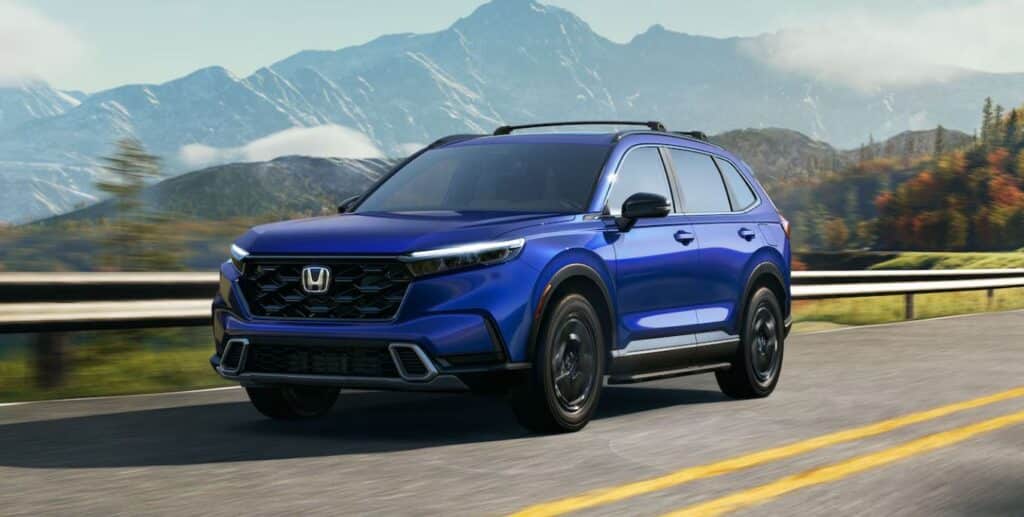
Lighting and Visibility Are Solid
LED headlights and daytime running lights come standard, with options for fog lights and power-folding mirrors on upper trims. The CR-V does gain an edge with its wide-angle rearview camera, which enhances rearward visibility and simplifies parking. The RAV4’s outward visibility is still very good, but its thicker rear pillars and angled rear glass limit over-the-shoulder sightlines in some conditions.
Aerodynamically, the CR-V benefits from a sleeker, more tapered shape, contributing to quieter highway manners and marginally better fuel efficiency in its hybrid form. The RAV4’s boxier profile adds visual presence but also creates more drag, which can be a minor factor in fuel economy and wind noise.
Interior Comfort & Space
Slide into the 2025 Toyota RAV4 or Honda CR-V, and you’ll find space, comfort, and smart design. But the vibe? Totally different. The RAV4 goes rugged and minimal—built to take a little dirt. The CR-V feels softer, smoother, more upscale. Both are practical. The difference lies in what you value more: toughness or comfort.
The CR-V’s cabin feels modern, airy, and well-planned. It features a horizontal dash layout with a full-width honeycomb grille insert that hides the air vents, adding a clean, upscale appearance. The layout is intuitive, with clearly labeled physical controls, good screen visibility, and a relaxed driving position. Material quality is high across most trims, with soft-touch surfaces in key areas and tight fit and finish throughout. Higher trims like the EX-L and Sport Touring include leather seating, a power-adjustable driver’s seat, and ambient lighting that further elevate the interior.
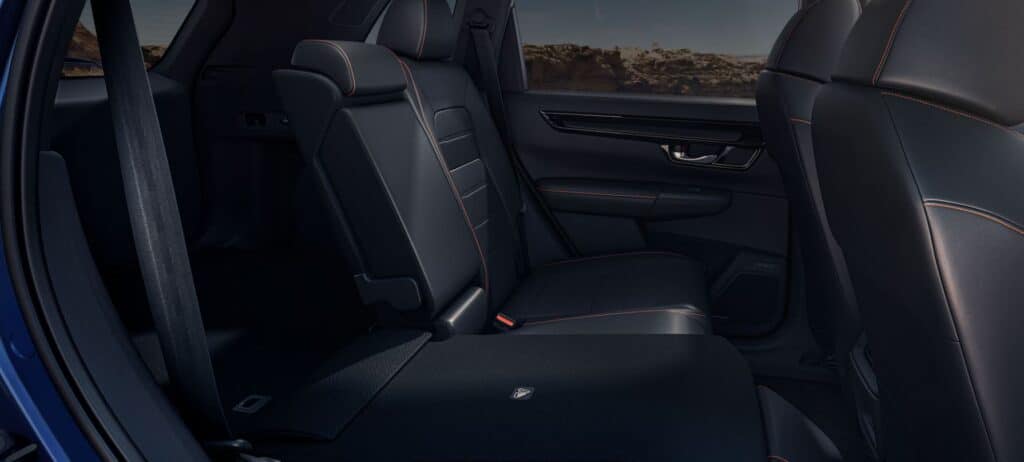
Honda Nails Seat Comfort
The front seats are designed to reduce fatigue on long drives, and rear-seat passengers enjoy generous legroom—over 41 inches in the second row. The rear seats recline and fold flat, creating a cargo-friendly layout. With the rear seats up, cargo capacity is a best-in-class 39.3 cubic feet, expanding to 76.5 cubic feet with them folded. The cargo floor is adjustable to accommodate taller items, and access through the wide-opening tailgate is simple and low-effort.
The RAV4’s cabin has a more utilitarian, upright layout. The dashboard places controls within easy reach, and rubberized knobs and durable plastics on lower trims are clearly built with longevity in mind. While material quality improves in higher trims, some areas—particularly around the center console—use more hard plastics than in the CR-V. Overall, the RAV4 interior emphasizes durability over plushness.
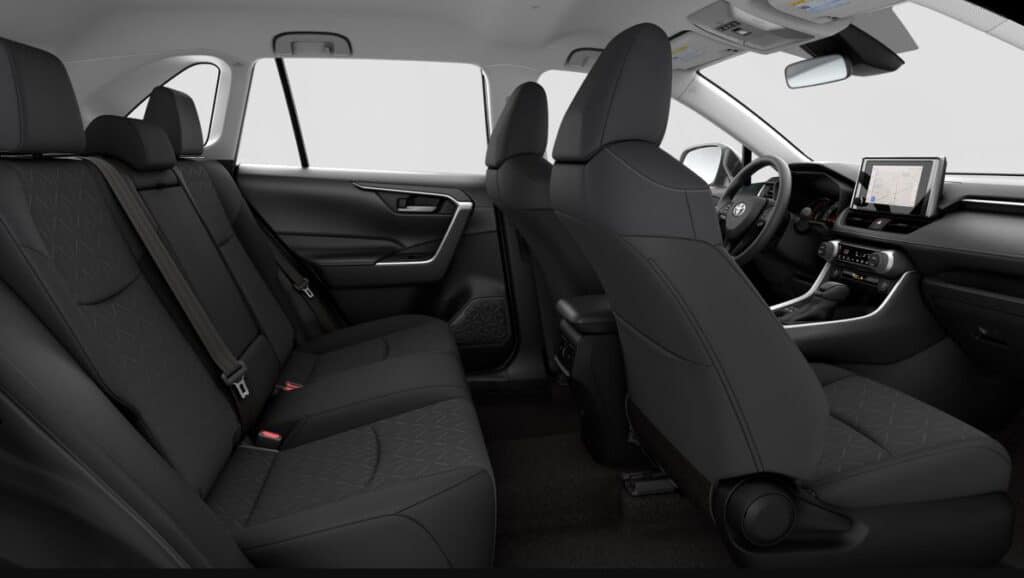
The RAV4’s Seats Are Firm
Seating comfort is adequate, but less sculpted than the CR-V’s, which may lead to more fatigue on long trips. Rear legroom is slightly tighter, though still roomy enough for adults or growing kids. The cargo area offers 37.6 cubic feet behind the second row and up to 69.8 cubic feet with seats folded—respectable, but a few cubic feet shy of the CR-V in both configurations. Toyota does offer a height-adjustable cargo floor on most trims, which helps with loading bulky items.
Both SUVs provide a high seating position with good forward visibility, though the CR-V’s slimmer roof pillars and large windows give it an edge in overall openness and outward sightlines. Rearward visibility is better in the CR-V as well, aided by its wider rear window and excellent rearview camera system.
Cabin storage is another point of differentiation. The RAV4 includes a small tray above the glovebox and a large center console bin, while the CR-V’s layout is more streamlined but offers ample space between the seats and in the door pockets. Honda’s center bin is slightly smaller in this generation compared to its predecessor, but storage is still practical and well-organized.
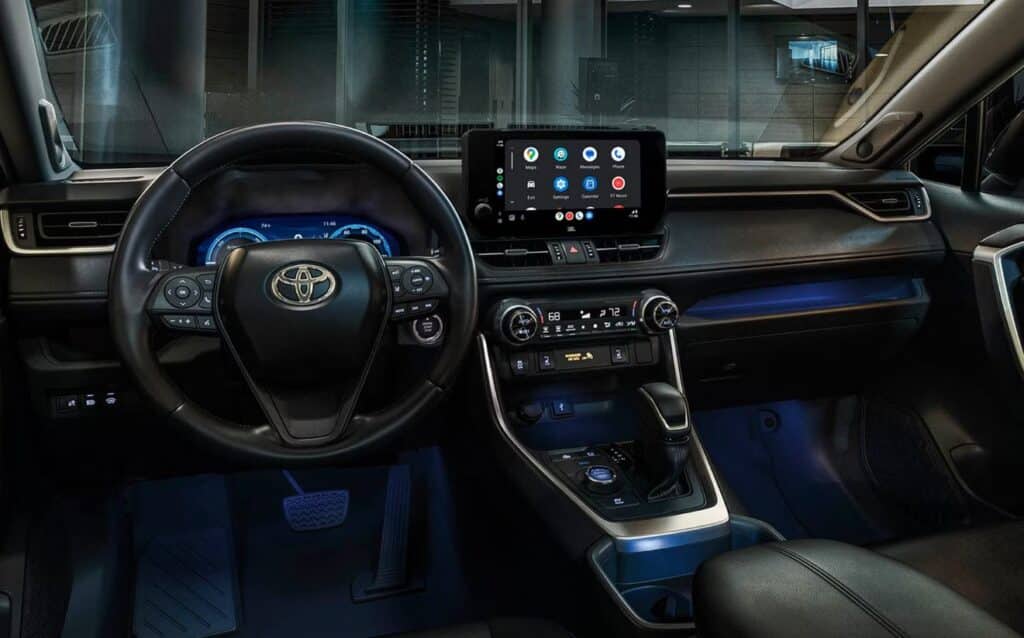
The Better Interior?
The CR-V takes the lead inside with a more refined layout, superior seat comfort, greater rear legroom, and best-in-class cargo space. The RAV4’s interior is functional and durable, but the Honda delivers a more comfortable and polished experience overall.
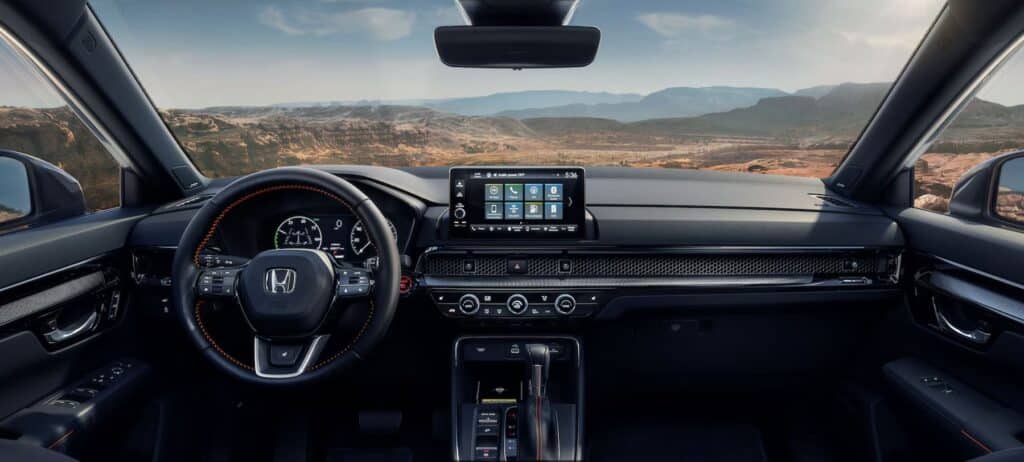
Infotainment & Technology
Infotainment isn’t just a bonus anymore—it’s the brain of the modern SUV. In the 2025 Toyota RAV4 and Honda CR-V, touchscreens, smartphone apps, and driver displays are front and center. But here’s the twist: Toyota and Honda don’t play by the same rules. Each brand takes a different path to keep you connected.
The 2025 Honda CR-V features a straightforward, user-friendly system across its trims. The base LX and EX models come with a 7.0-inch touchscreen, offering wired Apple CarPlay and Android Auto, physical volume and tuning knobs, and a clean, simple layout. Stepping up to the EX-L and Sport Touring trims upgrades the display to a 9.0-inch touchscreen with wireless Apple CarPlay and Android Auto, integrated navigation, and a wireless charging pad. The larger screen loses the tuning knob but retains tactile buttons for key functions and keeps the overall interface quick and responsive.
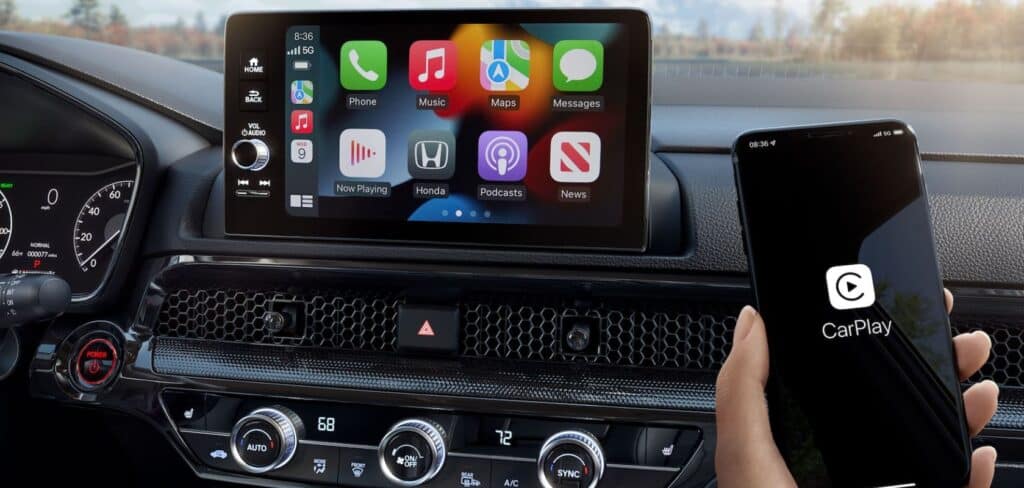
The CR-V’s infotainment system isn’t flashy
But thankfully, it’s effective. The interface is intuitive, startup times are quick, and lag is minimal. Honda has kept the user experience focused on ease of use rather than overcomplicating with layered menus or over-the-top graphics. The Sport Touring trim also adds a premium 12-speaker Bose sound system that delivers solid audio clarity — a welcome upgrade over the standard 6-speaker setup in lower trims.
The Toyota RAV4 uses a slightly different philosophy. The LE and XLE trims come with an 8.0-inch touchscreen featuring wireless Apple CarPlay and Android Auto, while higher trims — including XSE and Limited — receive a larger 10.5-inch screen with sharper resolution. Toyota’s system, known as the Audio Multimedia platform, is built around Google-based architecture and emphasizes a connected experience, with cloud-based navigation and voice-activated controls included on most mid and upper trims.
Voice command functionality is a strong point for Toyota. The “Hey Toyota” voice assistant is available on most trims and can adjust climate controls, set navigation destinations, or place calls with natural speech commands. The interface is sleek, modern, and touch inputs are responsive — though some functions, like audio settings or advanced menus, are hidden in deeper submenus that may require a learning curve.
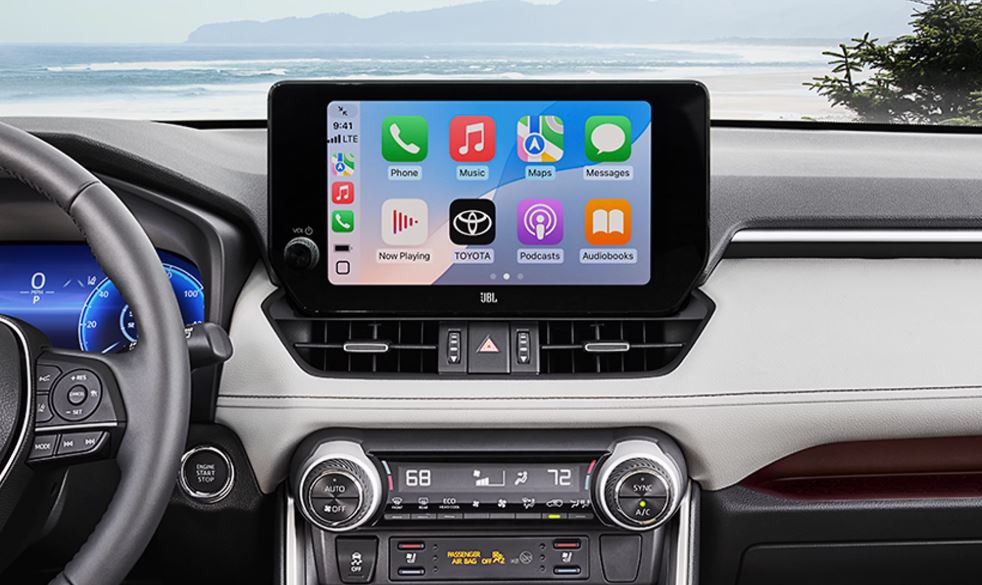
The RAV4 Also Includes Dual Bluetooth Pairing
This allows two devices to remain connected simultaneously — helpful for families juggling multiple phones. However, unlike the CR-V, it doesn’t offer physical tuning knobs on the larger 10.5-inch screen, relying entirely on touchscreen inputs or steering wheel controls.
In terms of USB connectivity, both vehicles provide front and rear USB-C ports in upper trims, but Honda’s placement is more convenient, and wireless charging comes standard earlier in the CR-V trim ladder than in the RAV4. Neither system is class-leading in terms of innovation, but both deliver consistent performance and cover the core needs of most drivers.
Dimensions & Cargo Capacity
Size matters—especially for families. A few inches can mean the difference between a tight squeeze and a smooth ride. The 2025 Toyota RAV4 and Honda CR-V are close in size, but not twins. From legroom to cargo space to curb appeal, the details tell the real story. Let’s break it down.
Exterior Dimensions
Both the RAV4 and CR-V offer similar compact footprints, making them easy to maneuver in urban and suburban environments. However, the CR-V is slightly longer overall, which contributes to its edge in rear legroom and cargo capacity. Meanwhile, the RAV4 rides a bit higher, benefiting ground clearance and entry angles on uneven terrain.
| Specification (inches) | 2025 Honda CR-V | 2025 Toyota RAV4 |
|---|---|---|
| Length | 184.8 | 180.9 |
| Width | 73.5 | 73.4 |
| Height | 66.5 | 67.0 |
| Wheelbase | 106.3 | 105.9 |
| Ground Clearance | 7.8 | 8.4 |
The RAV4’s higher ground clearance (8.4 inches on most trims) gives it better capability for snow, gravel, and trail use. In contrast, the CR-V’s slightly lower stance (7.8 inches for AWD models) favors easier step-in height for passengers and pets, as well as improved aerodynamics.
RAV4 vs CR-V Interior Space
Inside, the CR-V offers a more spacious rear seat and slightly better overall passenger volume, making it feel roomier on longer trips or when installing car seats. The CR-V also benefits from a flatter rear floor, which helps maximize usable space for rear passengers.
| Specification (inches) | 2025 Honda CR-V | 2025 Toyota RAV4 |
|---|---|---|
| Passenger Vol. (cu.ft) | 106.0 | 98.9 |
| Front Headroom | 40.0 | 37.7 |
| Rear Headroom | 38.2 | 39.5 |
| Front Legroom | 41.3 | 41.0 |
| Rear Legroom | 41.0 | 37.8 |
| Front Shoulder Room | 57.9 | 57.8 |
| Rear Shoulder Room | 55.9 | 56.4 |
The most notable difference is in rear legroom, where the CR-V offers over 3 inches more space. That makes a difference when fitting rear-facing car seats, transporting teenagers, or simply stretching out on road trips. The RAV4 offers slightly more rear headroom, though the difference is marginal.
Cargo Capacity
When it comes to hauling sports gear, groceries, or road trip luggage, both SUVs are among the leaders in their class — but the CR-V pulls ahead in raw cargo volume.
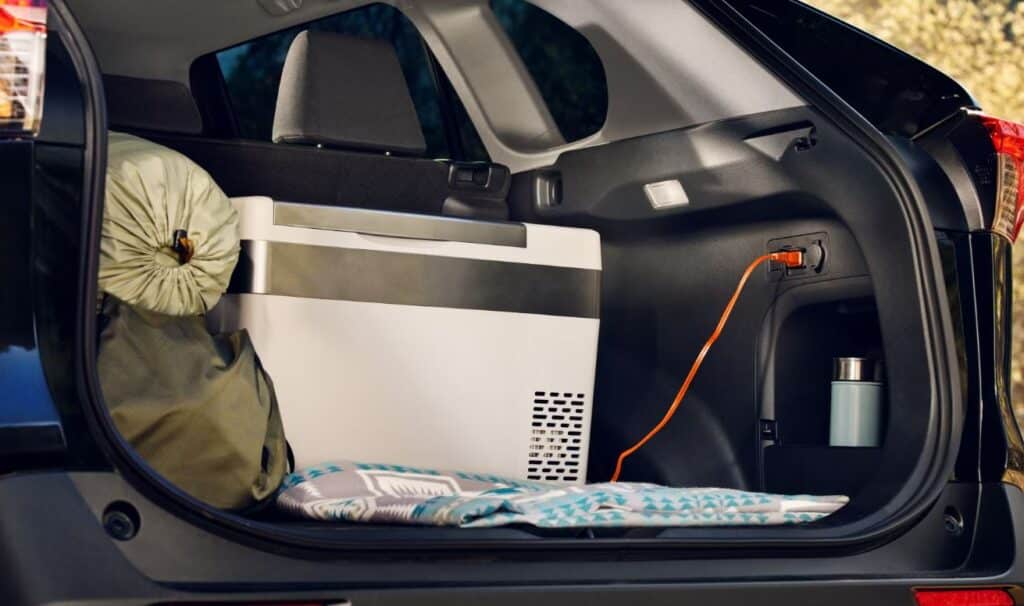
| Cargo Capacity (cu ft) | 2025 Honda CR-V | 2025 Toyota RAV4 |
|---|---|---|
| Behind Second Row | 39.3 | 37.6 |
| Max Cargo Capacity | 76.5 | 69.8 |
The CR-V’s advantage here is due to its flatter floor, wider tailgate opening, and lower liftover height — all of which simplify loading bulky items. The RAV4’s cargo space is still generous, but its slightly narrower layout and higher floor reduce usable volume for larger objects.
Advantage: CR-V
The Honda CR-V edges out the RAV4 with more rear legroom, greater total passenger volume, and superior cargo capacity. While the RAV4 counters with higher ground clearance and a more rugged stance, the CR-V’s added interior space makes it better suited for families who value comfort and versatility over all-terrain readiness.
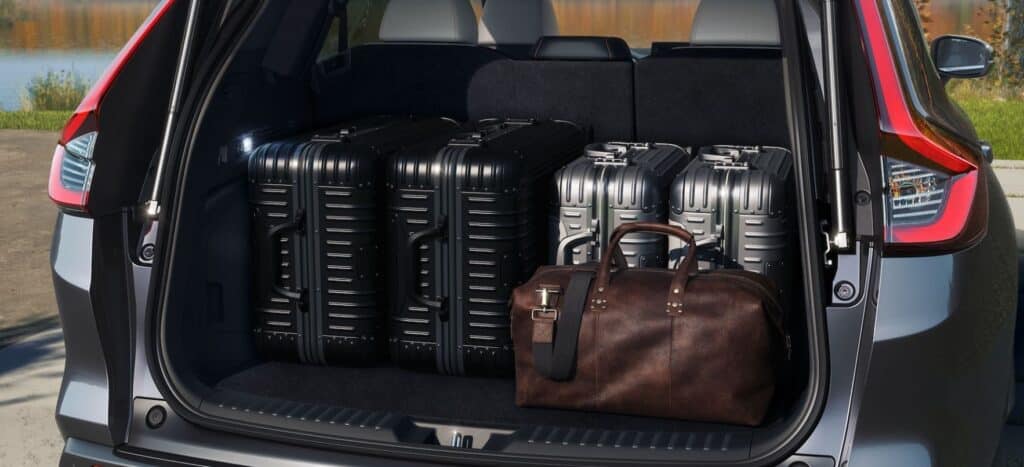
Final Thoughts: Best Compact SUV 2025
Both the 2025 Toyota RAV4 and Honda CR-V are top-tier compact SUVs—reliable, efficient, and loaded with everyday usability. But when you look closely, their personalities diverge.
The Honda CR-V is the better pick for families and commuters who value comfort, refinement, and interior space. It offers smoother performance, a more upscale cabin, superior rear legroom, and best-in-class cargo capacity. If your daily drive leans more suburban than rugged, the CR-V fits the role perfectly.
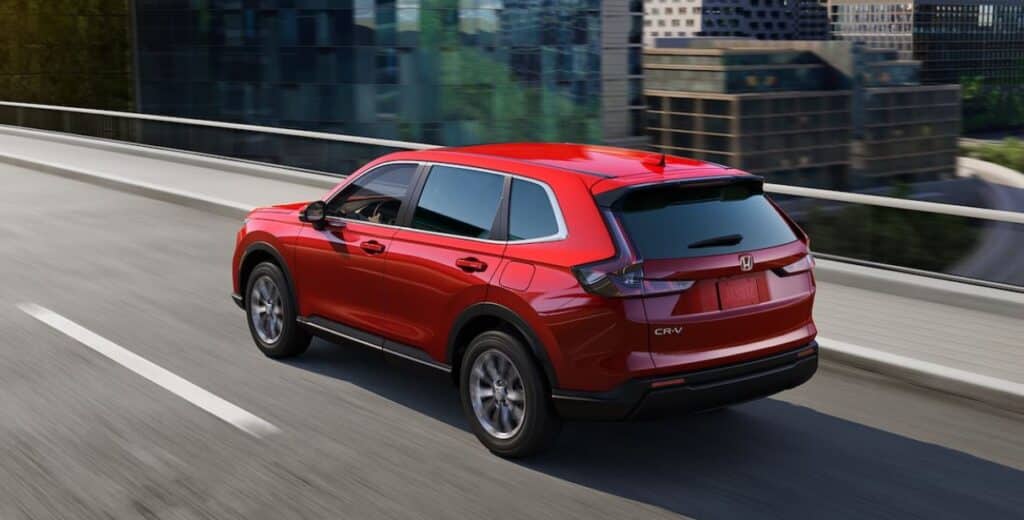
The Toyota RAV4, on the other hand, brings a tougher, more adventurous vibe. It offers higher ground clearance, a traditional transmission feel, and a design that leans into outdoor readiness. It’s a solid choice for drivers who want durability, a firmer ride, and a more rugged aesthetic—especially in snow or on gravel roads.
In the Toyota RAV4 vs Honda CR-V matchup, neither SUV is a bad choice. It comes down to priorities: comfort and refinement or ruggedness and utility. Either way, you’re getting one of the most trusted names in the segment.
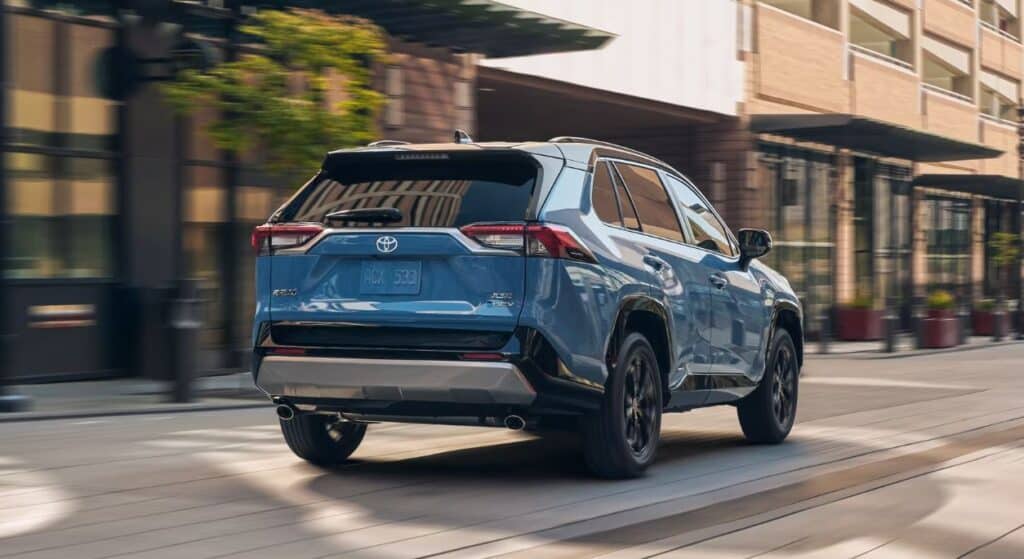
Thanks for reading this review of the 2025 Toyota RAV4 vs Honda CR-V. Our goal was to make it interesting and informative. If you’re looking for a vehicle a little larger, we have reviews on their bigger siblings – the Toyota Highlander and the Honda Pilot. Cheers!



